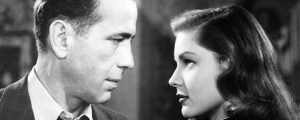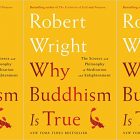Why is THE LONG GOODBYE so Long?

Detective novels are meant to grab you, kick you in the gut, hoist you up by your cheap lapels, and carry you along riveted as you stagger through the L.A. streets. On your journey you’ll drink from flasks, resist femmes fatales (or not), and compromise your principles just enough to defeat the city’s darker elements.
Without fail, that’s how it goes. These books cut to the chase. They scratch every itch. They’re not much for contemplation. Plots never stop moving, and every seemingly extraneous detail exists for a reason. When a trail goes cold, there’s probably a secret clue somewhere. A chance encounter is almost never a coincidence. Even red herrings seem important right until they don’t. Stuff is going to happen, and it’s going to be gritty, and you’re going to like it.
The Long Goodbye, the 1953 hardboiled detective novel by Raymond Chandler, breaks almost entirely from this formula. I won’t spoil the plot, but it doesn’t give away much to reveal that our man Philip Marlowe doesn’t exactly move in a straight line. On at least two occasions, he pursues a lead, finds nothing, and returns to his coffee and his hangover. As he himself admits, he “waste[s] tires, gasoline, words, and nervous energy in a game with no pay-off.” Indeed, we never again see the “interesting characters” (his description) whom Marlowe encounters during his time-wasting.
Later, Marlowe spends two chapters at a cocktail party where rich people exchange insults, but where there are no real developments to the narrative. He then goes home and sets up a chess board where he plays out “a championship tournament game between Gortchakoff and Meninkin, seventy-two moves to a draw, a prize specimen of the irresistible force meeting the immovable object, a battle without armor, a war without blood, and as elaborate a waste of human intelligence as you could find anywhere outside an advertising agency.” It’s a long-winded non sequitur of a sentence that’s a joy to read, but that takes up ink usually reserved for staredowns with Big Bads who casually threaten violence.
Gambits like these wouldn’t ordinarily be expected from Chandler, who helped invent the very style he was undermining. Chandler’s first novel, The Big Sleep, is a masterpiece of storytelling, dialogue, humor, and…well, just read it if you haven’t already. But above all, it’s a masterpiece of concision. The Big Sleep checks in at about 70,000 words and 231 pages. The Long Goodbye, written 14 years later, takes 379 meandering pages before it exhausts its limits. While the prose style is unmistakably Chandler, the story feels at times like your best friend waking up and telling you about her dream.
What’s Chandler up to in his late-life opus? Why would Marlowe follow a slim lead because he “didn’t have anything else to do”? Why would he proceed to a home for “sick old people” only to tell the proprietor “when my job makes me feel dirty I’ll think of you”? And why would Chandler never remind us of this encounter again?
Possibly Marlowe is echoing the ennui and despair of his creator. The Long Goodbye was written and researched while Chandler’s wife Cissy was battling a terminal illness. Burying himself in the novel was one of the (healthier) ways Chandler had of coping.
Research itself was also new to him. As Chandler’s biographer Tom Williams tells it, the writer departed from his earlier philosophy that too much research spoiled the literary effect. In his later work, Chandler wanted some working knowledge of his character’s profession, as evidenced by The Long Goodbye’s first chapters. “If you have committed a crime or anything the law calls a crime—a serious crime, I mean—I can’t be told about it,” Marlowe says to his friend Terry Lennox. “If you have essential knowledge that such a crime has been committed, I can’t be told about that either.”
But a new dedication to research, though it may have lengthened individual scenes, doesn’t explain how or why Chandler stretched the novel out to fifty-three chapters. Did there really need to be a long subplot where Marlowe befriends the victim’s sister, even though she adds almost nothing to Marlowe’s understanding of the case?
The beauty of The Long Goodbye is that it soon ceases to matter where any of the plot points lead. We’re so engrossed in the world, and in the people who inhabit it, that the twists and turns are secondary. And maybe that’s the point. Williams says that, for Chandler, character was more important than plot. Philip Marlowe had always been a complex personality with a vacillating moral compass, but in The Long Goodbye, Eileen Wade, Roger Wade, Linda Loring, and Terry Lennox are also dignified with rich backstories and uncertain levels of likeability. “I didn’t care whether the mystery was fairly obvious,” Chandler wrote to his agents, “but I cared about the people.” Chandler had a deep ambivalence about being labeled a “genre” writer. Perhaps slowing down his narrative allowed Chandler both to defy his category’s expectations, and further explore his beloved characters.
Whether Chandler consciously wanted a different approach to tell this particular story, or whether he moved to a digressive style to avoid confronting his real-life trauma, the result is a mystery novel unlike any other. And either way, putting down the pen and turning away from his characters was taking a slow toll on Chandler. He had to slow the pace of his novel to keep himself writing. After all, as Marlowe says in one of the novel’s last lines: “To say goodbye is to die a little.”



